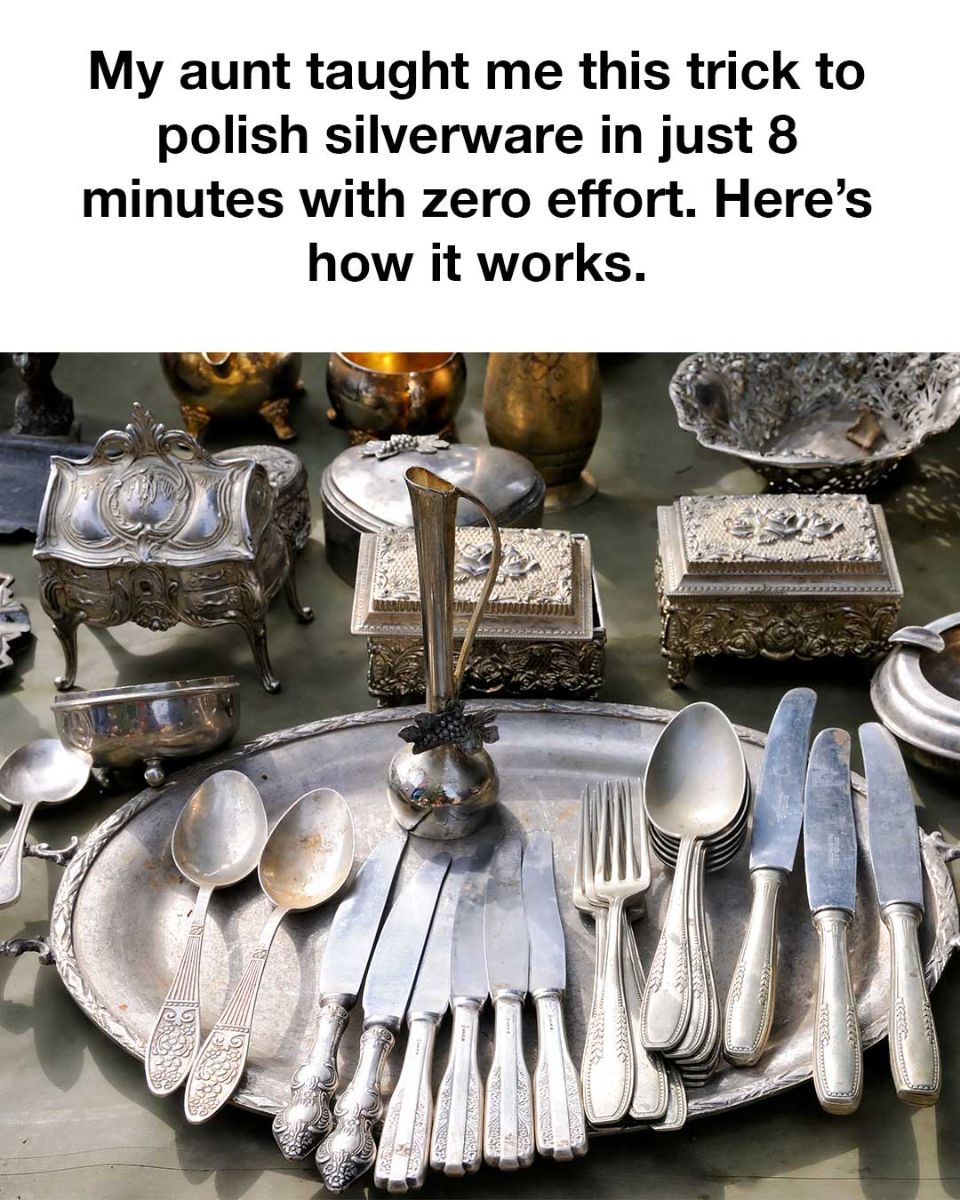Add Baking Soda: Sprinkle a generous amount of baking soda over the foil. Depending on the size of your container and the amount of silverware, use about 1/4 to 1/2 cup of baking soda.
Place the Silverware: Lay your tarnished silverware on top of the baking soda and aluminum foil. Ensure that each piece is in contact with the foil, as this is crucial for the reaction to occur.
Pour Boiling Water: Carefully pour boiling water over the silverware until it is fully submerged. As soon as the hot water hits the baking soda and foil, you’ll notice the tarnish begin to disappear almost instantly.
Wait and Watch: Let the silverware soak in the solution for 5-8 minutes. The chemical reaction between the aluminum foil, baking soda, and tarnish will break down the silver sulfide, leaving your silverware looking shiny and new.
Remove and Rinse: Using tongs or a spoon, carefully remove the silverware from the container. Rinse each piece under cool running water to wash away any remaining baking soda residue.
Dry and Buff: Dry your silverware thoroughly with a soft cloth. If needed, give it a gentle buff to enhance the shine further.
How It Works
The magic of this method lies in the electrochemical reaction that occurs between the aluminum foil and the silverware. When you add baking soda and boiling water to the mix, it creates an environment where the tarnish (silver sulfide) is converted back to silver. The sulfur atoms from the silver sulfide transfer to the aluminum, forming aluminum sulfide and leaving your silverware tarnish-free.
Benefits of This Method
No Harsh Chemicals: Unlike commercial silver polishes, this method uses natural, non-toxic ingredients.
Quick and Easy: The entire process takes just a few minutes, with no scrubbing required.
Preserves Silver: Because there’s no abrasive rubbing involved, this method is gentle on your silverware, helping it last longer.
Cost-Effective: With just a bit of baking soda and aluminum foil, you can achieve professional results without the need for expensive polishes.
Additional Tips
Avoid Contact with Metal Containers: Always use a non-metallic container for this method, as metal can interfere with the chemical reaction.
Not for All Silver Items: This method works best for pure silver and sterling silver items. Avoid using it on silver-plated items, as it could damage the plating.
Polish Occasionally: While this method is highly effective, regular use of a soft cloth to polish your silverware will keep it shining between deep cleans.
Polishing silverware no longer needs to be a daunting task. With this simple trick my aunt taught me, you can restore your silver’s luster in just 8 minutes, without any of the elbow grease or harsh chemicals. It’s a perfect example of how sometimes the best solutions are the simplest, requiring only a few everyday items and a bit of know-how. Try it for yourself, and you’ll be amazed at the results—a sparkling, elegant table setting with minimal effort!

